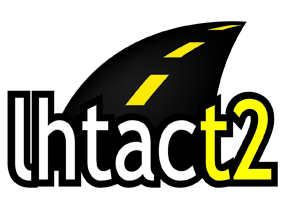

New multi-use path in Spirit Lake
serves biking, pedestrian interests
![]()
A new eight-foot-wide multi-use path was recently completed in the northern Idaho town of Spirit Lake, connecting Idaho Highway 41 (5th Avenue), city hall, and the fire station, and adding sidewalk to many residences in the area. The path, identified as a need by the city since 2007, used $216,456 in TAP (Transportation Alternatives Program) funding.
The TAP program is administered by ITD, with individual projects completed by partners at ITD’s district offices. LHTAC (Local Highway Technical Assistance Council) recently partnered with ITD to administer local projects that are off the state highway system throughout Idaho, and this is the first TAP project delivered by LHTAC in Spirit Lake. The project also included adjacent drainage and parking improvements between the path and traveled way.
“This is a special partnership, and it is important to recognize the significant success achieved by LHTAC and the city — nice work!” said ITD Program Manager Ryan McDaniel.
“We should look back on this project in time, after many more successes to come, and remember that anything is possible through partnerships built on honesty, responsibility, respect and fairness.”
Recent improvement projects have taken place in the city's downtown area and along 10th Avenue, which have improved pedestrian and bike systems. The path joins the east side of town (residential area, junior high and high school) to the west side (downtown shopping, dining, lake access, elementary school), and improves mobility and acces s for the citizens of Spirit Lake. City officials also indicated the new path would enhance tourism and have a favorable overall economic impact.
s for the citizens of Spirit Lake. City officials also indicated the new path would enhance tourism and have a favorable overall economic impact.
The real winner from this collaboration is the city.
“With the current narrow roadway and no pedestrian pathway, the pedestrian is at great risk traveling amongst the vehicles,” the project application stated. “The risk is increased during the winter months when snow further limits the travel lanes and ice causes potential for loss of vehicle control.”
The project was designed by JUB Engineers and awarded to National Native American Construction for construction in May 2018. LHTAC managed the project through design and construction, and the project was completed on time and within the available budget.
Published 03-08-19